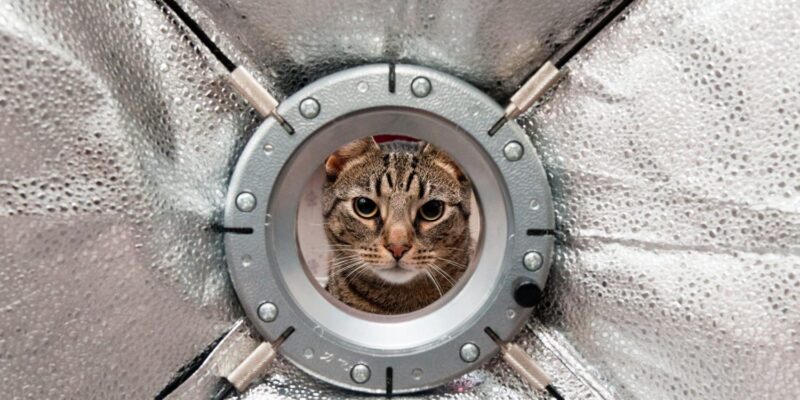How did cats get the cream of the Internet?
Cat videos have won the Internet—Grumpy Cat, Nyan Cat and Keyboard Cat fill our social media feeds. Why do people create these videos? What motivates them, and how does the cat video market work? Equally, why do we watch videos of cats rather than watching perceived higher-quality content such as opera or learning a language online?
Videos of cats doing funny things or aping human characteristics have become a defining feature of the Internet and a daily item in many people’s digital feeds. According to online video industry data provider, Tubular Insights, by 2014 there were about 2m cat videos on YouTube, which in total had been watched 25bn times. An average cat video could be expected to be viewed 12,000 times.1
Cat videos reach their intended audience via a variety of media platforms, from services, such as Snapchat and Instagram, that provide short clips, to broader social media sites such as Facebook and user-generated content platforms such as YouTube.
Animals being filmed doing funny things is not a new phenomenon. America’s Funniest Home Videos, a TV series that began in 1989 and was syndicated globally, would regularly feature sections on animals doing funny things in front of home video cameras.2
The Internet is made of cats
At the time of writing, YouTube returns around 93m results for cat videos—and the existence of a whole festival devoted to online cat videos suggests that the market is not insignificant. As an economist waiting for their econometric code to finish running or for the ink to dry on their latest algebraic derivation, one might wonder why cat videos become so popular (see the box).
Why cats?
There are potentially some psychological reasons for cats’ popularity on the Internet. While there are always exceptions, cats are generally perceived to be athletic acrobats, with a personality that is inquisitive, independent and somewhat unpredictable. Although many people may prefer dogs or pandas, these combined traits—for the average viewer—may give cats the edge over other animals.
Cats also ‘travel’ well. They are common household pets in most continents, particularly those with large Internet penetration (North America, Europe and Asia). This commonality means that cat videos do not face some of the barriers that other cultural content does, and may therefore transfer more easily across geographic borders.
Watching cat behaviour may be beneficial to our subjective wellbeing: a recent study shows that viewing cat videos boosts energy and positive emotions, while reducing anxiety.1
Source: 1 Myrick, J.G. (2015), ‘Emotion regulation, procrastination, and watching cat videos online: Who watches Internet cats, why, and to what effect?’, Computers in Human Behavior, 52, November, pp. 168–176.
Creators of successful cat videos are incentivised to produce content—from the feedback they get from their fans, the intrinsic creative reward, and the different revenue streams that may result. Some video-sharing platforms allocate a share of the associated advertising, within or surrounding the video, to content creators. In addition, many content creators monetise their efforts through related merchandising and book sales.
Two technology-related developments have enabled this somewhat unlikely market to exist.
Cheaper production and distribution
First, compared with more traditional forms of media, such as TV and film, the availability of low-cost computing and video-sharing platforms has lowered the costs of content production and distribution for certain applications, including cat videos. It is now possible for anyone with a suitably expressive cat, a smartphone and a computer to produce a short video to test whether their cat is worthy of Internet fame.
Not only is production less expensive, but distribution has also been made much cheaper and easier through the use of advertising-funded platforms. Content creators can use these to upload content for free, and users can watch content for free in return for watching adverts. Instead of paying for a narrower set of curated content, consumers now have access to a much wider range of user-generated content funded by advertising revenue.
In particular, the information generated about who is watching cat videos enables content creators to prove to advertisers the value of their specific audience. If fans of Grumpy Cat are known to be single professionals interested in dating then advertising can be targeted to that group, making it more likely to be successful and hence worth more than if it were untargeted. Knowing the make-up of the audience in this way also makes it easier to sell merchandising and obtain future book deals, in a way that is not possible when the advertiser does not know who their marketing is aimed at and has to pay for more adverts in order to get the same number of click-throughs.
Matching
The second enabler has been the matching function provided by online platforms. Traditional forms of media typically provided curated content, whereby TV broadcasters and film distributors would select what they thought consumers would like to see. They would gauge their success by how many people watched a particular programme or film, but it was hard to judge how successful that was given that there was nothing to measure it against—the counterfactual of providing different content was normally not observed.
The rise of matching algorithms means that consumers can now search for and find content that matches their interests and tastes much more specifically. Search boxes, shared content and algorithmically derived recommendations allow consumers to find and explore very specific genres, which would not have been possible for TV or film previously.
For example, people in one country who enjoy listening to folk music from another country were unlikely to constitute a big enough audience to warrant radio stations dedicating content to that genre. However, the lower cost of production and distribution, as well as search and automated recommendations, now mean that previously unviable markets such as this may be able to thrive.
These technologies are not just being harnessed in order to match makers of cat videos with their viewers. Other applications of matching algorithms that enable new markets to exist or operate more effectively include websites (such as eBay and Gumtree) that allow buyers and sellers of second-hand goods to find each other, and sharing economy sites that match the supply of labour, accommodation or cars with consumers looking for these services without long-term commitments.
The combination of lower production and distribution costs and the advancement in matching algorithms has provided the conditions for markets such as cat videos to exist and thrive.
Why are we watching cats rather than learning a language?
While this explains how the market for cat videos works, it does not explain why we watch hours of cat videos rather than doing something more productive. If technology has lowered the costs of production of all types of content and made it much easier to find and access any content, why, of all things, have cat videos been so successful?
The Alchian–Allen theorem
An answer may be found in the Alchian–Allen theorem.3 This extension to traditional demand theory states that if an additional fixed cost, or ‘per item’ tax, is added to two substitutable goods, there will be a shift in the balance of consumption to the good that is of higher quality, as it becomes relatively cheaper.
The theorem was originally used to help understand why cities that produced lots of a particular good, such as apples in Seattle, appear to have lower-quality apples than somewhere that imports apples, such as New York.4 The answer lies in transport costs.
If, in Seattle, a good apple costs 10 cents and a mediocre apple costs 5 cents, the cost of a good apple is equivalent to the cost of two mediocre ones. However, in New York it costs an extra 5 cents to transport an apple from Seattle, regardless of whether it is good or mediocre. Adding 5 cents to the cost of all apples in New York means a good apple costs 15 cents and a mediocre apple costs 10 cents. Hence a good apple in New York is worth one and a half mediocre apples in terms of cost rather than the two it is worth in Seattle.5
The intuition behind this finding is that when you have significant fixed costs, it is more profitable to export the higher-quality produce and consume the lower-quality produce locally, assuming tastes and preferences are the same in both places. Changing the fixed costs changes not only the amount produced, but also the balance between higher and lower quality.
…and back to cats
But what has this got to do with cat videos? As discussed above, digitisation and online platforms have given us cheaper content production and distribution as well as matching functions that significantly increase the chance of the audience finding a particular video. These are both benefits to content producers.
In the apples example the increased fixed costs of transport were passed on to consumers in the form of higher prices. In video, consumers also benefit from lower transaction costs through better matching and a wider variety of content to choose from. This reduction in fixed costs for consumers could be seen as the opposite to the addition of the transport costs in the apples example.
Using the Alchian–Allen theorem, researchers have predicted that reducing the transaction costs associated with accessing content will not only increase the total amount of content consumed, but may also change the mix of content consumed.6 Online video platforms and new technology have reduced the cost of accessing all content, which may have the effect of increasing the relative attractiveness of watching bite-sized videos of cute animals compared with watching content that is longer and requires more commitment, such as opera, or learning a language online.
It’s important to remember that the Alchian–Allen theorem is a theorem and has not yet been empirically tested in this context. Other social factors are likely to be at work here as well, and the Alchian–Allen theorem may explain only part of this cultural shift.
Online video platforms have changed the way we consume content. A few years ago cats may have got a few minutes on home video shows, but technological advances in both production and distribution have led to the development of a whole industry to meet a previously un-met demand for cute fluffiness. Cat videos are a good example of how markets that bring consumer satisfaction and commercial opportunity can exist when matching problems are overcome. The story of cat videos also tells us that, when technology disrupts markets with big cost changes, we shouldn’t necessarily expect the mix of output produced to stay the same.
1 Tubular Insights (2014), ‘Cat videos on YouTube: 2 million uploads, 25 billion views’, 29 October.
2 Perhaps it was no accident that the Finnish version was called Hauskat Kotivideot, Hauskat being Finnish for funny or hilarious.
3 Alchian, A. and Allen, W. (1964), University Economics, pp. 74–75.
4 Borcherding, T.E. and Silberberg, E. (1978), ‘Shipping the Good Apples Out: The Alchian and Allen Theorem Reconsidered’, Journal of Political Economy, 86:1, February, pp. 131–138.
5 First described in a response to a question in the Seattle Times, 28 October 1975.
6 Potts, J. (2014), ‘The Alchian-Allen Theorem and the Economics of Internet Animals’, M/C Journal, 17:2, February.
Download
Related

Ofgem’s RIIO-3 Sector Specific Methodology Decision
On 18 July 2024, Ofgem published its Sector Specific Methodology Decision (SSMD) for the forthcoming RIIO-3 price control period for electricity transmission (ET), gas transmission (GT) and gas distribution (GD) networks.1 This follows Ofgem’s consultation on the matter in December 2023.2 RIIO-3 will last for… Read More

The future funding of the England & Wales water sector: Ofwat’s draft determinations
On Thursday 11 July, Ofwat (the England and Wales water regulator) published its much anticipated Draft Determinations (DDs). As part of the PR24 price review, this sets out its provisional assessment of allowed revenues and performance targets for AMP8 (2025–30)—and will be of great interest to water companies, investors,… Read More

